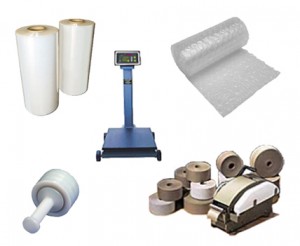 Stretch wrap is something that is widely used both in industry and at home. It is used for everything from wrapping stacks of products piled onto a pallet so that they remain intact during transport to preserving and extending the life of a bowl of chicken salad that will be stored in your refrigerator.
Stretch wrap is something that is widely used both in industry and at home. It is used for everything from wrapping stacks of products piled onto a pallet so that they remain intact during transport to preserving and extending the life of a bowl of chicken salad that will be stored in your refrigerator.
But how does stretch wrap work, anyway?
How Stretch Wrap Is Made
Stretch wrap is made from a substance known as linear low-density polyethylene, or LLDPE for short. Made from petroleum, it is the same type of material that is used to make a wide variety of products, from garbage bags to plastic toys to Tupperware containers.
What makes LLDPE so perfect for stretch wrap is its flexibility. LLDPE stretch film can be pulled over a large surface area without puncturing or tearing. It is is even tough enough to be pulled around corners of products, boxes and pallets.
Increasing the Strength of Stretch Film
Stretch wrap comes in different densities, depending on how it is to be used. Wrap that will be used to hold pallets full of products together is relatively thick while the type you use in your home or kitchen is much thinner.
The thickness of stretch film can vary from 60 gauge to 150 gauge. Lower gauge stretch film is ideal for loads weighing up to 1,300 lbs. and for shorter loads where only the top and bottom need to be wrapped.
Heavier gauge stretch film is used for loads up to 3,500 lbs. and for taller and heavier loads.
Stretching the film increases the load stability, but it also can increase the strength of the film. Some types of stretch wrap are able to be stretched up to 200% of their original size.
Types of Stretch Film
While different industries use many different types of stretch film, they all can generally be divided into two distinct types.
Cast stretch film uses rollers that cool the film while it is being produced. It is the least expensive type of stretch film and has the most uses, both in industry and in the home.
Blown stretch film is produced using air, which is blown into the film during production to cool the material. Blown stretch film has more strength and is much more difficult to puncture, but it also tends to be more costly than cast stretch film. Usually, it is used for heavy-duty industrial applications.
Puncture Resistance
A new type stretch film is cheaper, thinner yet stronger than the type of product traditionally used to wrap products. But the downside of this new type of stretch film is that because it is thinner, it is more prone to being punctured, especially when applied to sharp corners of pallets, boxes or stacks of products.
Still, this new type of stretch film is ideal for wrapping boxes and crates without sharp corners because it costs much less than standard stretch film.
